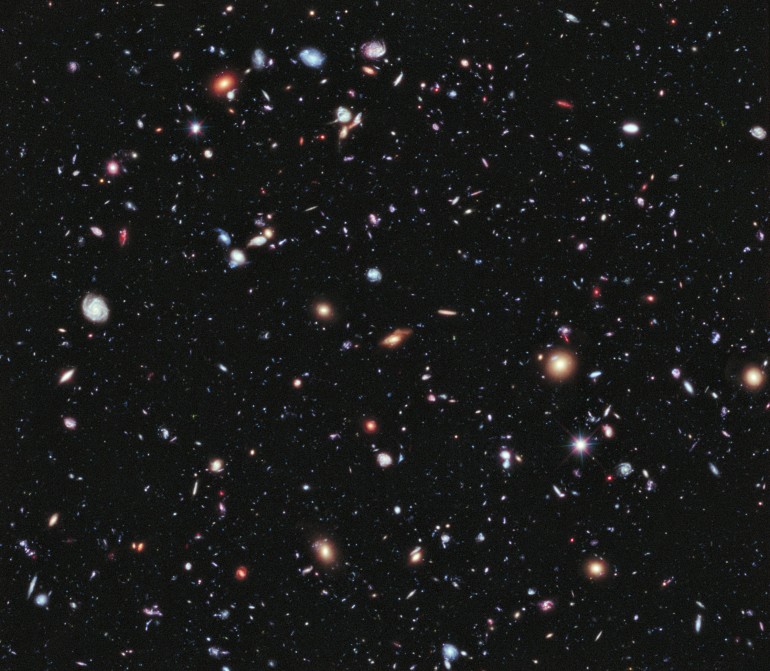There Are At Least 10 Times More Galaxies In The Universe Than We Thought
The universe suddenly looks a lot more crowded.
Waaaaay back in 1995, the Hubble Deep Field images surprised the world by revealing how crammed the universe is with galaxies. At that time astronomers estimated there were about 200 billion galaxies in the universe. Recent estimates put that count closer to 2 trillion, at least 10 times as many galaxies as we thought. However, about 90% of the galaxies in the observable Universe are actually too faint and too far away to be seen or studied. Phil Plait explains:
Now, let me be clear. This doesn’t meant the Universe is ten times bigger than we thought, or there are ten times as many stars. I’ll explain — I mean, duh, it’s what I do — but to cut to the chase, what they found is that there are lots of teeny, faint galaxies very far away that have gone undetected. So instead of being in a smaller number of big galaxies, stars are divvied up into a bigger number of smaller ones.
And it doesn’t mean the Universe has 10 times more mass than we thought. The mass is the same, it’s just distributed differently than we thought. It’s like knowing there are 1 million people in a city, and finding out they live in 100,000 buildings when you thought they were only in 10,000. There are more buildings, but not more people
This discovery has also helped lead to explanations for Olbers’ paradox which states, “Why is the sky dark at night if the universe contains a multitude of stars?” NASA helps explain:
The team came to the conclusion that indeed there actually is such an abundance of galaxies that, in principle, every patch in the sky contains part of a galaxy. However, starlight from the galaxies is invisible to the human eye and most modern telescopes due to other known factors that reduce visible and ultraviolet light in the universe. Those factors are the reddening of light due to the expansion of space, the universe’s dynamic nature, and the absorption of light by intergalactic dust and gas. All combined, this keeps the night sky dark to our vision.
The sky is literally covered in galaxies! Mind boggling to be sure!

